
Ram Navami, a sacred and highly revered festival, celebrates the divine birth of Bhagwan Shri Ram, the embodiment of Dharma, righteousness, and divine grace. Observed on the ninth day (Navami) of the waxing moon in the month of Chaitra, this auspicious occasion marks the descent of Bhagwan Vishnu in his most virtuous and noble form as Shri Ram, the Maryada Purushottam (the ideal being). Ram Navami signifies the triumph of good over evil, inspiring devotees to walk the path of truth, duty, and selfless devotion. It is a day of divine reflection, spiritual awakening, and reaffirming one’s faith in the eternal values of Sanatana Dharma.
In 2025, Ram Navami will be observed on Sunday, April 6th.
This sacred day is marked by fasting, chanting of Shri Ram’s holy name, recitation of Ramayana, and devotional singing of bhajans in praise of Bhagwan Ram. Devotees gather in temples and homes to perform elaborate pujas, offer special prayers, and partake in kirtans, seeking Shri Ram’s grace, wisdom, and divine protection. Many observe day-long fasting and engage in charity, believing that sincere devotion on this day leads to purification of the soul, removal of obstacles, and blessings of peace and prosperity. Ram Navami serves as a divine reminder that through faith, devotion, and righteousness, one can overcome all adversities and attain true spiritual fulfillment under the eternal guidance of Bhagwan Shri Ram.
Ram Navami Date, Time, Muhurat & Tithi
Ram Navami 2025 will be observed on Sunday, April 6th, 2025.
Navami Tithi (9th lunar day) of the Shukla Paksha in the Chaitra month as per the Hindu lunar calendar.
Key Timings for Ram Navami 2025:
-
Ram Navami Muhurat:
11:15 AM to 01:45 PM (IST)
Duration: 2 Hours 30 Minutes - Navami Tithi begins at 01:23 AM on April 6th (IST)
- Navami Tithi ends at 03:52 AM on April 7th (IST)
-
Rama Janmotsav Puja Muhurat:
12:00 PM to 12:40 PM (IST)
Duration: 40 Minutes - Rama Navami Madhyahna Muhurat - 12:36 PM to 03:11 PM (IST)
-
Rama Navami Madhyahna Moment -
12:24 PM (IST)
Sita Navami on Monday, May 5th, 2025
Note: Sunrise and sunset vary by region and date due to India's geographical diversity. For exact timings, refer to local astronomical data.
Significance & Importance of Ram Navami

Rama Navami carries deep spiritual symbolism that represents the inner journey of the soul toward truth, self-realization, and divine harmony. Every aspect of Shri Ram’s life, his name, family, and kingdom conveys a profound message about the human experience, the struggles within, and the path to spiritual awakening. Understanding the hidden meaning behind these elements allows devotees to connect Rama’s divine story with their own inner journey.
The Divine Light Within: The Meaning of ‘Rama’
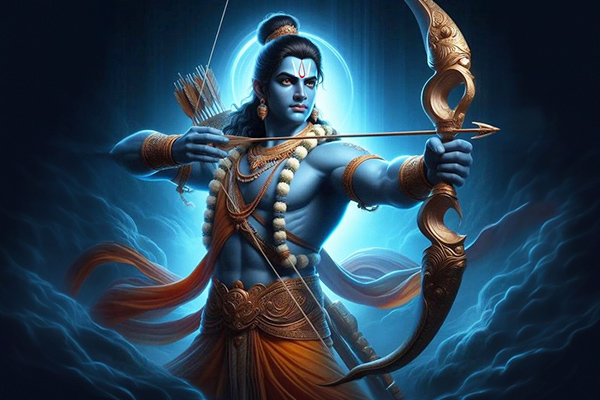
The name Rama itself holds great spiritual power. It is composed of two syllables:
- ‘Ra’ means light or radiance—the divine light of consciousness that illuminates the truth.
- ‘Ma’ means within—symbolizing that this divine light resides within us all.
Thus, Rama is not just an external deity but the inner light of self-awareness and wisdom. Chanting the name of Rama repeatedly is believed to awaken this divine energy within, dispelling ignorance and guiding the seeker toward enlightenment.
Dasharatha – The Chariot of the Senses
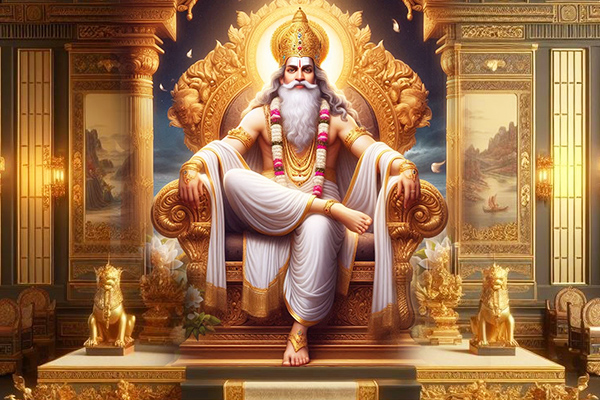
Shri Ram’s father, King Dasharatha, is not merely a historical figure but a symbol of human existence. His name is composed of:
- ‘Dasa’ meaning ten
- ‘Ratha’ meaning chariot
These ten chariots represent the ten senses that drive human experience, divided into two categories:
- The five active (Karmendriyas) senses: Speech (mouth), hands, legs, excretion, and reproduction.
- The five knowledge-acquiring (Gyanendriyas) senses: Eyes, ears, nose, tongue, and skin (touch).
Just like a charioteer must skillfully control his chariot, a person must master their senses to maintain balance and harmony. If these senses are left unchecked, they lead to desires, distractions, and suffering. However, when guided by wisdom and devotion, they serve as instruments for spiritual progress.
Kaushalya – The Power of Skill and Awareness

Shri Ram’s mother, Kaushalya, represents skill and discernment. The name Kaushalya means 'one who possesses great skill.' In the context of spiritual growth, she symbolizes the ability to wisely control the senses and direct them toward higher consciousness. Without this inner mastery, the mind remains scattered, making spiritual progress difficult. Just as Kaushalya nurtured Rama, a skilled mind nurtures the divine consciousness within, allowing it to manifest in life.
Ayodhya – The Inner Kingdom of Peace

The sacred birthplace and capital city of Shri Ram, Ayodhya, has a profound spiritual meaning. The name is derived from:
‘A’
(a negative prefix, meaning “not”)
‘Yodhya’
(meaning “war” or “conflict”)
Thus, Ayodhya means “a place where there is no war”, symbolizing a state of inner peace, balance, and righteousness. It represents the mind free from inner conflict, where truth, dharma, and harmony reign supreme. Just as Shri Ram ruled Ayodhya with justice and wisdom, a true seeker must strive to make their own consciousness a peaceful kingdom—free from desires, ego, and suffering.
The Evolution of Conflict Across Yugas – The Inner Battle

The epics of different yugas (ages) reveal how the nature of conflict has evolved over time:
- In Satya Yuga, the battle was between Devas (gods) and Asuras (demons) from different planets, symbolizing cosmic balance.
- In Treta Yuga (Rama’s era), the battle was between two kingdoms—Shri Ram from Ayodhya and Ravan from Lanka, symbolizing the war between dharma (righteousness) and adharma (unrighteousness).
- In Dwapara Yuga (Krishna’s era), the battle was within the same family—the Pandavas and Kauravas, representing the struggle for righteousness within one’s own close relations.
- In Kali Yuga (the present age) , the battle is within the individual—a war between ego, desires, and the soul's higher calling.
This inner war is symbolized through different characters:

- Rama – The soul (Atman), the true divine self, who seeks righteousness and truth.
- Sita – The mind, which should remain pure and devoted but is often kidnapped by ego and desires (Ravana).
- Hanuman – The life force (Prana), breath, and devotion. He is the key to bringing the mind (Sita) back to the soul (Rama) through devotion and self-discipline.
- Ravana – The ego (Ahamkara), which deceives and steals the mind away from its true purpose.
Thus, the story of Ramayana is not just an epic tale, but a metaphor for the battle within every individual. To reunite the mind (Sita) with the soul (Rama), one must use devotion, discipline, and self-awareness ( Hanuman ) to defeat ego and desires (Ravana).
The Path to Spiritual Victory – Meditation and Awareness

The final lesson of Rama Navami is that spiritual liberation (moksha) is attained when the mind and soul are in harmony.
To achieve this:
- One must practice meditation and self-reflection, as breath (prana) is the bridge between mind and soul.
- By controlling desires and attachments, one removes Ravana’s influence over Sita and allows Rama to rule Ayodhya once again—restoring peace within.
- Chanting Rama’s name, following Dharma, and living a righteous life ensures that the ego is conquered and the soul attains divine bliss and liberation.
Rama Navami is a divine call to awaken the Rama within, to conquer inner battles, and to establish our consciousness as an Ayodhya—a kingdom of peace, wisdom, and righteousness. The epic of Shri Ram teaches us that true victory is not won on the battlefield but within our own hearts, where faith, discipline, and devotion lead to the ultimate reunion of the soul (Rama) and the divine (Sita).
The Story of Ramayana: The Divine Journey of Lord Rama

The Ramayana, one of the greatest epics of ancient India, was composed by sage Valmiki in 24,000 verses, divided into seven Kandas (chapters). This sacred text narrates the life and journey of Bhagwan Shri Ram, the incarnation of Lord Vishnu , and his pursuit to uphold Dharma (righteousness), justice, and truth. Though Lord Rama was himself divine, he chose to live as a perfect human being, demonstrating ideal virtues as a son, king, husband, brother, and master. His life’s purpose was to restore balance in the world by defeating evil, a mission that unfolded when his beloved consort, Maa Sita, was abducted by Ravana, the mighty yet arrogant king of Lanka.
In the glorious kingdom of Ayodhya, King Dasharatha, the righteous ruler of the Ikshvaku dynasty, wished to install his eldest son, Rama, as the crown prince. However, his youngest queen, Kaikeyi, reminded him of a boon he had once granted her, demanding that Bharata, her own son, be crowned instead, while Rama be exiled for fourteen years. Bound by his word, Dasharatha was heartbroken, but Rama, ever obedient and unwavering in duty, accepted the decree without question. He left for the forest, accompanied by his devoted wife, Sita, and his loyal brother, Lakshmana. As the three ventured into the wilderness, they lived a life of simplicity, performing penance and upholding Dharma even in exile.
.jpg)
During their exile, a demoness named Shurpanakha, sister of Ravana, was smitten by Rama's beauty and valor. When she approached him with amorous intentions, he gently refused, redirecting her towards Lakshmana, who also turned her down. Enraged, she attempted to harm Sita but was swiftly punished by Lakshmana, who cut off her nose. Humiliated, she fled to Lanka and described Sita's unparalleled beauty to her brother Ravana, igniting his desire to possess her. Determined to take Sita for himself, Ravana devised a cunning plan. He sent Maricha, a demon, disguised as a golden deer, to lure Rama away from the hermitage. Sita, enchanted by the sight, requested Rama to capture it for her. As Rama pursued the illusionary deer, it cried out in his voice for help, causing Sita to worry. She insisted that Lakshmana go to his aid, leaving her momentarily unguarded. Before leaving, Lakshmana drew a protective line (Lakshmana Rekha) around their hut and warned Sita not to step beyond it.
.jpg)
Seizing the opportunity, Ravana disguised himself as a mendicant, begging for alms. When Sita stepped outside the protective line, he revealed his true form, seized her, and carried her away in his Pushpaka Vimana (celestial chariot). As he flew toward Lanka, the noble Jatayu, a mighty eagle and devotee of Lord Rama, attempted to rescue Sita, but Ravana mercilessly wounded him, leaving him to perish. Before his last breath, Jatayu managed to inform Rama of Sita's abduction, sending Rama into deep anguish and determination to find her.
With unwavering resolve, Rama sought the alliance of Hanuman, the divine vanara (monkey warrior) and an ardent devotee of Shri Ram. Along with Sugriva, the ruler of Kishkindha, and his mighty army of vanaras, they prepared to wage war against Ravana. Hanuman, displaying extraordinary strength and devotion, took a giant leap across the ocean to Lanka, where he secretly found Sita in Ashok Vatika, sorrowfully awaiting Rama’s rescue. He gave her Rama’s ring, assuring her that the Lord would soon arrive. Before leaving, Hanuman allowed himself to be captured by Ravana’s forces, testing their strength. Enraged, Ravana ordered his tail to be set on fire, but Hanuman used this to his advantage, setting Lanka ablaze with flames before making his escape.

Rama and his army reached Lanka by constructing the Ram Setu (bridge to Lanka), invoking the blessings of Varuna, the ocean god. The war between Rama and Ravana was one of the most fierce and destructive battles ever fought. Rama’s army clashed with Ravana’s mighty warriors, including his powerful son Indrajit, who wounded Lakshmana grievously. To save him, Hanuman flew to the Himalayas and carried an entire mountain of medicinal herbs (Sanjeevani) back to Lanka, reviving Lakshmana and strengthening their forces.
In the climactic battle, Rama faced Ravana directly, yet his arrows failed to bring the demon king down. It was Vibhishana, Ravana’s own righteous brother, who revealed his secret—that Ravana could only be killed if struck in his navel. Rama, with his divine arrow, pierced Ravana’s navel, destroying him and ending his reign of terror. The mighty Ravana, once invincible, fell at the feet of Rama, proving that even the strongest of beings cannot escape the consequences of ego, arrogance, and unrighteousness.
.jpg)
After the battle, Sita was finally reunited with Rama, but to uphold her honor in the eyes of society, she underwent the Agni Pariksha (trial by fire) to prove her chastity. The fire god Agni himself declared her purity, as flames could not touch her, and she was restored to Rama. Victorious, Rama, Sita, Lakshmana, and Hanuman returned to Ayodhya, where they were welcomed with great joy and devotion. The people rejoiced, lighting lamps throughout the city, marking the occasion that later became known as Diwali, the festival of lights. Bharata, who had ruled in Rama’s absence with deep humility, immediately offered the throne back to its rightful king.
Though Ayodhya rejoiced in Rama’s rule, a whisper of doubt arose in the kingdom regarding Sita’s chastity due to her captivity in Lanka. Ever the upholder of Dharma and duty, Rama, though pained, sent Sita away to sage Valmiki’s ashram, where she gave birth to their twin sons, Luv and Kush. Under Valmiki’s guidance, the boys grew into noble warriors, eventually reciting the Ramayana before their father, unaware of their royal lineage. When Rama learned the truth, he was overwhelmed with grief and love. However, Sita, having endured great trials, prayed to Mother Earth, asking for refuge, and was taken back into the earth’s embrace, leaving behind a legacy of faith, sacrifice, and devotion.
The Ramayana remains one of the greatest epics of all time, teaching lessons of righteousness, devotion, humility, and duty. Shri Ram, through his life and actions, demonstrated that true leadership lies in selflessness, virtue, and unwavering commitment to Dharma. His story continues to inspire millions, reminding humanity that goodness, truth, and justice will always prevail over evil.
Mention in the Brahma Samhita
Lord Brahma in his scriptural treatise Brahma Samhita prays to the Lord reciting:
‘ramadi-murtishu kala-niyamena tishthan nanavataram akarod bhuvaneshu kintu krishnah svayam samabhavat paramaha puman yo govindam adi-purusham tam aham bhajami’
Meaning: “I offer prayers to Lord Govinda, the Primeval Lord, Who personally appeared as al-divine Krishna and the different incarnations in the world such as Rama, Narsimha, Vamana and others as His subjective portions.”
The prayers by Lord Brahma confirm the fact that the Lord appears in His various incarnations. Out of which, the Rama incarnation personifies justice, ethics, and victory over vices. As a part of the spring Navratri , Rama Navami is marked on the ninth day of the bright half (Shukla Paksha) in the Vedic/Hindu calendar month of Chaitra (March or April).
How to celebrate Ram Navami

Ram Navami, the auspicious day marking the divine birth of Bhagwan Shri Ram, is celebrated with great devotion and grandeur. The day begins with an early morning bath, followed by cleaning and decorating homes and temples to welcome the divine presence of Shri Ram, Sita, Lakshmana, and Hanuman.
Devotees set up a sacred altar adorned with flowers, diyas, incense, and idols or pictures of Shri Ram. Many observe fasting (Vrat), either abstaining from food completely or consuming fruits, milk, and sattvic meals, as a mark of purity and devotion. The Ram Navami Puja is performed with offerings of panchamrit, fruits, sweets, and tulsi leaves, along with the recitation of sacred mantras and stotras, such as the Ram Raksha Stotra, Vishnu Sahasranama, and Shri Ram Ashtakam.
A significant part of the celebration is the recitation of the Ramayana, especially Bala Kanda and Ayodhya Kanda, which narrate the divine birth and virtues of Shri Ram. Many devotees participate in bhajans, kirtans, and Ram Katha discourses, filling the atmosphere with chants of “Jai Shri Ram” and “Ram Naam Jap”, invoking peace, devotion, and divine grace.
At noon, the exact time of Shri Ram’s birth, a grand Aarti is performed, and bhog offerings such as panakam (jaggery water), chana dal, and kheer are presented to the deity before being distributed as prasad. Many temples and communities organize Shobha Yatras (divine processions), where idols of Shri Ram, Sita, Lakshmana, and Hanuman are carried in beautifully decorated chariots, accompanied by devotees singing devotional songs and celebrating the glory of Shri Ram’s life and teachings.
Charity and acts of kindness hold special importance on this day, as devotees offer food, clothes, and donations to the needy, embodying Shri Ram’s ideals of selflessness and righteousness.
As the evening approaches, devotees conclude their Vrat (fasting) with prasad and sattvic meals, reflecting on Shri Ram’s life and the values of Dharma, truth, and devotion.
The day ends with continued chanting of 'Shri Ram Jai Ram Jai Jai Ram,' reinforcing the spiritual connection with Bhagwan Ram. Celebrating Ram Navami with sincerity and faith brings divine blessings, inner peace, and the guidance of Bhagwan Shri Ram, ensuring righteousness and harmony in one’s life.
Ram Navami Festival Puja Vidhi (Puja Procedure)
.jpg)
The celebration of Ram Navami begins with cleaning and decorating the puja space. The home or temple is made clean and sacred, with flowers, rangoli, and diyas (oil lamps) adorning the area. A sacred altar is prepared with the idol or picture of Shri Ram, Sita, Lakshmana, and Hanuman, along with incense sticks, fruits, flowers, and sweets as offerings.
Prepare prasad (offerings) such as panchamrit, kheer, and fruits, which will later be offered to Lord Ram and distributed as prasad.
- Early Morning Rituals and Fasting: Devotees begin the day with an early morning bath and purification, preparing themselves spiritually for the puja. Many observe a day-long fast (Vrat), either consuming only fruits, milk, or sattvic food or abstaining from food entirely. The fasting is done with a sense of devotion and dedication, as the focus is on spiritual growth and connection with Shri Ram. The puja begins with the chanting of sacred mantras such as Ram Raksha Stotra, Shri Ram Ashtakshara Mantra, and Vishnu Sahasranama, invoking the blessings of Shri Ram for peace, prosperity, and spiritual guidance.
- Ram Navami Aarti and Prayer Offerings: At noon, the time of Lord Ram’s divine birth, devotees perform the Ram Navami Aarti, singing devotional hymns and offering Naivedya (food offerings) like panakam (sweetened jaggery water), chana dal, and sweets to Lord Ram. During the aarti, devotees sing praises of Shri Ram’s virtues, his valor, and his adherence to Dharma. Offerings of flowers, tulsi leaves, and fruits are placed on the altar. Devotees can also perform abhishek (ritual bathing) of the idol with water, milk, and honey, while reciting the name of Shri Ram with deep devotion.
- Recitation of Ramayana and Kirtans: A significant part of Ram Navami is the recitation of the Ramayana, especially the Bala Kanda, which narrates the birth and childhood of Shri Ram, and the Ayodhya Kanda, which details his return to Ayodhya after a long exile. Bhajans and kirtans in praise of Lord Ram are sung, creating an atmosphere of devotion and spiritual energy. This is an ideal time for devotees to immerse themselves in the teachings of Shri Ram and reaffirm their commitment to righteousness (Dharma).
- Concluding the Puja: The puja concludes with prayers for peace, prosperity, and harmony, thanking Shri Ram for his divine blessings. Prasad (blessed food) is distributed among family members, friends, and neighbors, symbolizing the spread of Ram’s divine grace. After the puja, devotees may choose to break their fast (Vrat) with the prasad or simple sattvic food, offering gratitude to Lord Ram for the blessings received. The day concludes with the chanting of Shri Ram’s name, which is believed to bring inner peace, spiritual elevation, and the fulfillment of desires.
Observing Ram Navami with devotion and sincerity brings the devotee closer to the values of righteousness, duty, and selfless service, embodying the qualities of Shri Ram in daily life.
Ram Navami Puja Mantras
Chanting sacred mantras during Ram Navami Puja invokes the divine presence of Bhagwan Shri Ram, bringing peace, prosperity, and spiritual elevation. Below are the most powerful Ram Navami Puja Mantras to be recited during the worship of Lord Ram.
Shri Ram Ashtakshara Mantra (Eight-Syllable Mantra)
॥ ॐ श्री रामाय नमः ॥
'Om Shri Ramaya Namaha'
Meaning:
I bow to Bhagwan Shri Ram, the supreme embodiment of Dharma, righteousness, and divine grace.
Ram Raksha Stotra Mantra (For Protection and Blessings)
॥ श्री रामचन्द्राय शरणं मम ॥
'Shri Ramachandraya Sharanam Mama'
Meaning:
I surrender myself to Bhagwan Shri Ram, seeking his divine protection, guidance, and blessings.
Shri Ram Gayatri Mantra (For Spiritual Awakening and Strength)
॥ ॐ दशरथाय विद्महे सीता वल्लभाय धीमहि तन्नो रामः प्रचोदयात् ॥
'Om Dasharathaya Vidmahe,
Sita Vallabhaya Dhimahi,
Tanno Ramah Prachodayat'
Meaning: We meditate upon Shri Ram, the son of King Dasharatha and the beloved of Sita. May Bhagwan Ram guide us toward righteousness and wisdom.
Shri Rama Taraka Mantra (The Liberating Chant)
॥ श्री राम जय राम जय जय राम ॥
'Shri Ram Jai Ram Jai Jai Ram'
Meaning:
Victory to Bhagwan Shri Ram! This mantra is the Taraka Mantra, meaning it leads to liberation (moksha) and removes all sins, fears, and obstacles.
Vishnu Sahasranama Stotra – Shri Rama Mantra
॥ रामो राजमणिः सदा विजयते रामं रमेशं भजे ॥
'Ramo Rajamani Sada Vijayate, Ramam Ramesham Bhaje'
Meaning:
Shri Ram is the divine jewel among kings, and his victory is eternal. I worship Lord Ram, the Lord of Rameshwaram and the protector of the universe.
Shri Ram Naam Jaap (The Continuous Chanting for Devotion and Peace)
॥ राम राम राम ॥
'Ram Ram Ram'
This simple yet powerful chant is known to bring inner peace, divine bliss, and spiritual progress. Constant repetition of Shri Ram’s name cleanses the mind and connects the devotee to the supreme divine presence of Bhagwan Ram.
How to Chant These Mantras During Ram Navami Puja
- Begin the puja with the Ram Ashtakshara Mantra, offering flowers and akshat (rice grains) to Bhagwan Shri Ram.
- During the Abhishek (ritual bathing) of the idol, chant the Shri Ram Taraka Mantra and Ram Raksha Stotra for protection.
- Recite the Shri Ram Gayatri Mantra before the Aarti, seeking spiritual wisdom.
- End the puja with continuous chanting of 'Shri Ram Jai Ram Jai Jai Ram', filling the atmosphere with divine vibrations.
By chanting these sacred mantras with devotion and sincerity, devotees receive Bhagwan Shri Ram’s divine grace, peace, strength, and ultimate liberation.
Ram Navami Vrat Vidhi (Fasting Procedure)
.jpg)
Observing Ram Navami Vrat begins with an early morning bath and purification, ensuring both physical and spiritual cleanliness. Devotees wear clean, traditional clothes and set up a sacred altar with an idol or image of Bhagwan Shri Ram, Maa Sita, Lakshmana, and Hanuman.
Before starting the fast, devotees take a Sankalp (sacred vow), mentally resolving to observe the vrat with devotion, seeking Shri Ram’s blessings for peace, prosperity, and spiritual elevation.
Types of Fasting and Guidelines
Ram Navami Vrat can be observed in different ways, depending on an individual's devotion and physical ability. Some devotees keep a Nirjala Vrat (waterless fast), refraining from food and water throughout the day until the puja and aarti are completed. Others observe a Phalahar Vrat, consuming only fruits, milk, and sattvic foods like kheer, sabudana, and nuts. A few opt for a simple vegetarian meal, avoiding grains, salt, onions, and garlic, following the principles of purity and sattvic living.
Ram Navami Puja and Devotional Practices
Throughout the day, devotees engage in prayers, mantra chanting, and recitation of the Ramayana, especially Bala Kanda and Ayodhya Kanda. The Ram Raksha Stotra, Shri Ram Ashtakshara Mantra, and Shri Ram Jai Ram Jai Jai Ram are chanted to invoke Shri Ram’s divine presence. At noon, marking Shri Ram’s birth moment, a special aarti is performed, and offerings like panchamrit, tulsi leaves, fruits, and sweets are presented to the deity. Many devotees visit Ram temples, participate in kirtans, and listen to Ram Katha discourses, deepening their spiritual connection.
Breaking the Fast and Concluding the Vrat
The fast is traditionally broken in the evening after completing Ram Navami Puja and Aarti. Devotees consume prasad, which includes kheer, panakam (jaggery water), and fruits, ensuring the meal remains simple and sattvic. Charity and donations to the needy are considered highly auspicious, as they reflect Shri Ram’s virtues of selflessness and righteousness. By observing Ram Navami Vrat with faith and sincerity, devotees receive divine blessings, protection from hardships, and spiritual upliftment, aligning themselves with the path of Dharma and truth as exemplified by Bhagwan Shri Ram.
Ram Navami Vrat Katha (Traditional Fasting Story)
.jpg)
In the ancient and glorious city of Ayodhya, ruled the noble King Dasharatha, a monarch of great wisdom, valor, and righteousness. His reign was marked by peace, prosperity, and Dharma, yet beneath all the grandeur, he carried a deep sorrow—he had no children to continue his lineage and uphold the sacred throne of the Ikshvaku dynasty. Despite his great devotion to Dharma and selfless service to his people, fate denied him an heir. Longing for a son who would be a protector of righteousness, King Dasharatha turned to the divine path for an answer, deciding to perform the Putrakameshti Yajna, a sacred fire ritual prescribed by sages to invoke the blessings of the gods for progeny.
With deep reverence and faith, the king conducted the yajna under the guidance of the great sages. As the sacred flames rose toward the heavens, Agni Deva (the Fire God) emerged, holding a golden vessel filled with celestial payasam (sweet rice pudding). In a booming divine voice, he declared, “O noble King Dasharatha, the gods have heard your prayers. Distribute this divine nectar among your queens, and soon, you shall be blessed with sons who will bring light to the world.” Overcome with gratitude, the king immediately followed the divine command—Queen Kaushalya consumed the first portion and later gave birth to Bhagwan Shri Ram, Queen Kaikeyi bore Bharata, and Queen Sumitra received a double share, giving birth to Lakshmana and Shatrughna.
On the ninth day (Navami) of the Shukla Paksha in the Chaitra month, under the Punarvasu Nakshatra, Bhagwan Shri Ram took birth, and the heavens rejoiced. Celestial drums resounded in the sky, gods and sages showered flowers, and the people of Ayodhya erupted in joyous celebrations. The earth itself seemed to glow, as the divine incarnation of Bhagwan Vishnu had arrived to restore Dharma and destroy evil. Shri Ram’s life was destined to become an eternal beacon of righteousness, devotion, and duty, guiding humanity for ages to come.
As years passed, Shri Ram became the epitome of an ideal son, prince, husband, and king, demonstrating unparalleled sacrifice, humility, and courage. His banishment to the forest, the abduction of Maa Sita by Ravana, and his epic battle against the forces of adharma symbolize the eternal struggle between good and evil. Devotees observe Ram Navami Vrat to honor his divine birth and seek his blessings of wisdom, strength, and spiritual enlightenment. It is believed that those who fast with sincerity, chant his sacred name, and immerse themselves in his divine story are freed from sins, blessed with prosperity, and ultimately guided towards liberation (moksha).
Thus, Ram Navami is not merely a festival, but a spiritual awakening—a reminder that in every age, Shri Ram’s virtues of truth, devotion, and righteousness must be upheld. His life teaches that no matter the trials one faces, faith in Dharma and unwavering devotion to the divine will always lead to victory. Those who observe this vrat with devotion not only receive Bhagwan Ram’s divine protection but also align themselves with his eternal teachings, ensuring a life of peace, virtue, and ultimate fulfillment.
Puja Utensils, Essentials
Rudra Centre brings an extensive collection of Puja Articles which caters to all that is required for daily and special Puja Vidhis. We offer variants of designs and sizes in each category. The list includes handcrafted Puja Mandirs, Puja Pedestals, offering Bowls, Panchpatra, intricately carved Puja Thalis, Abhishek Vessels, in different materials, Pure Silver/German Silver articles like Kalash, set of Shodash Upachara and Several other Puja Articles, which we deliver at your doorstep.
Visit the complete collection:
Ram Puja (Puja for Victory and Success)
Ram Puja is performed to seek the divine blessings of Lord Rama, the epitome of dharma (righteousness), valor, and victory. Lord Ram, an incarnation of Lord Vishnu, symbolizes justice, virtue, and triumph over evil. This puja is especially beneficial for those seeking success in endeavors, resolution of conflicts, or overcoming challenges in personal and professional life. By invoking Lord Ram’s divine energy, one gains strength, clarity, and perseverance to achieve their goals while staying true to their moral values.
Benefits of Ram Puja:
- Ensures success and victory in personal, professional, and spiritual pursuits
- Resolves conflicts and removes obstacles
- Instills courage, perseverance, and righteousness
- Promotes clarity, wisdom, and focus
Rudra Centre Puja Services is the oldest and most trusted Online Puja Services provider in the world. Over 20 years we have organized Yagnas, Pujas, Homas and Kathas like Ati Rudra Mahayajna, Sahasra Chandi Homa, Akhand Ramayan Paath, Shiva Maha Puran Katha, 4 Prahar Mahashivratri Mahapuja with teams of 100’s of curated priests for the benefit of mankind and our global clientele.
Akhand Ramayana Path

Akhand Ramayan (Ramcharitmanas Paath) is written by Saint Tulsidas which is a poetic representation of the epic ‘Ramayana’ which was written by Sage Valmiki. The word ‘Ramcharitmanas’ literally translates to the 'Lake of Lord Rama's Deeds' and is renowned as one of the finest works in Hindu literature. Being an historical text the Akhand Ramayan (Ramcharitmanas Paath) mentions the tales and triumphs that took place in Lord Rama's life.
Benefits of Recitation of Akhand Ramayan Path:
- It helps to attain the divine blessings of Lord Rama and Lord Hanuman
- Listening to Akhand Ramayan (Ramcharitmanas Paath) helps to reveal the truth,
- It makes one courageous
- The Shri Ramcharitmanas Path motivates one to walk on the path of virtue
- It offers protection from evil and negative energies
- It safeguards from uneven forces and enemies
- It helps one to achieve His/ Her goals
- The Ramcharitmanas Sampurna Path offers success in professional life and offers name and fame
- It elevates one spiritually
- It offers success in new ventures and new businesses
- It helps to attain the set goals and targets
- It helps to ward off negativity
- It makes one courageous and motivates one to lead a righteous life
- Akhand Ramayan Path is auspicious and is often performed during new beginnings like Griha Pravesh (entering a new house), Marriage ceremonies, Birth of a Child, etc.
Rudra Centre Puja Services
is the oldest and most trusted Online Puja Services provider in the world. Over 20 years we have organized Yagnas, Pujas, Homas and Kathas like Ati Rudra Mahayajna, Sahasra Chandi Homa, Akhand Ramayan Paath, Shiva Maha Puran Katha, 4 Prahar Mahashivratri Mahapuja with teams of 100’s of curated priests for the benefit of mankind and our global clientele.
Conclusion
Ram Navami is a divine celebration of righteousness (Dharma), devotion (Bhakti), and selfless service (Seva). The birth of Bhagwan Shri Ram, the seventh incarnation of Lord Vishnu, symbolizes the triumph of good over evil, truth over falsehood, and duty over desire. His life and teachings serve as a guiding light for humanity, inspiring us to uphold righteousness, practice humility, and lead a life of integrity and devotion.
By observing Ram Navami Vrat, engaging in puja, fasting, recitation of Ramayana, and acts of charity, devotees seek Shri Ram’s divine blessings for peace, prosperity, and spiritual fulfillment. This sacred occasion reminds us that faith, perseverance, and unwavering devotion are the key to overcoming any obstacle or hardship in life. The values of Shri Ram—truthfulness, obedience, compassion, and justice—are timeless principles that resonate across generations, guiding seekers on the path of Dharma.
As the chants of 'Shri Ram Jai Ram Jai Jai Ram' fill the air on Ram Navami, devotees reaffirm their commitment to living a righteous life, ensuring that Shri Ram’s divine presence continues to shine in their hearts. The celebration of Ram Navami brings not just joy and devotion but also spiritual awakening, inspiring humanity to walk the path of virtue, wisdom, and eternal grace under the guidance of Bhagwan Shri Ram.

.jpg)
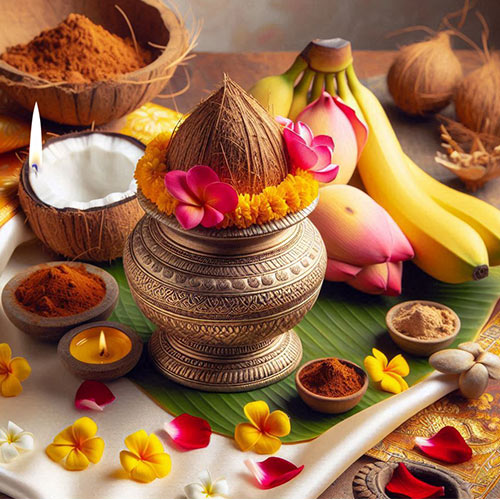


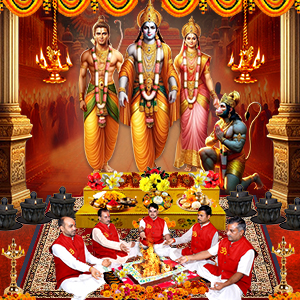
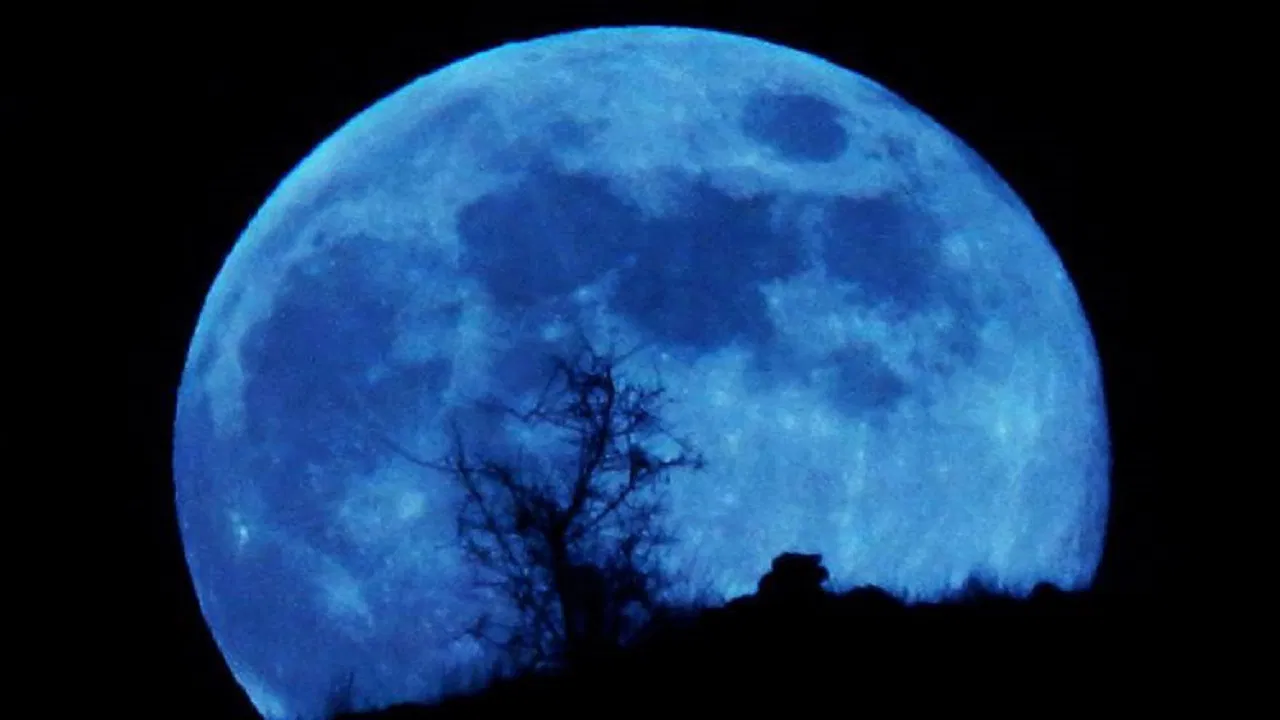

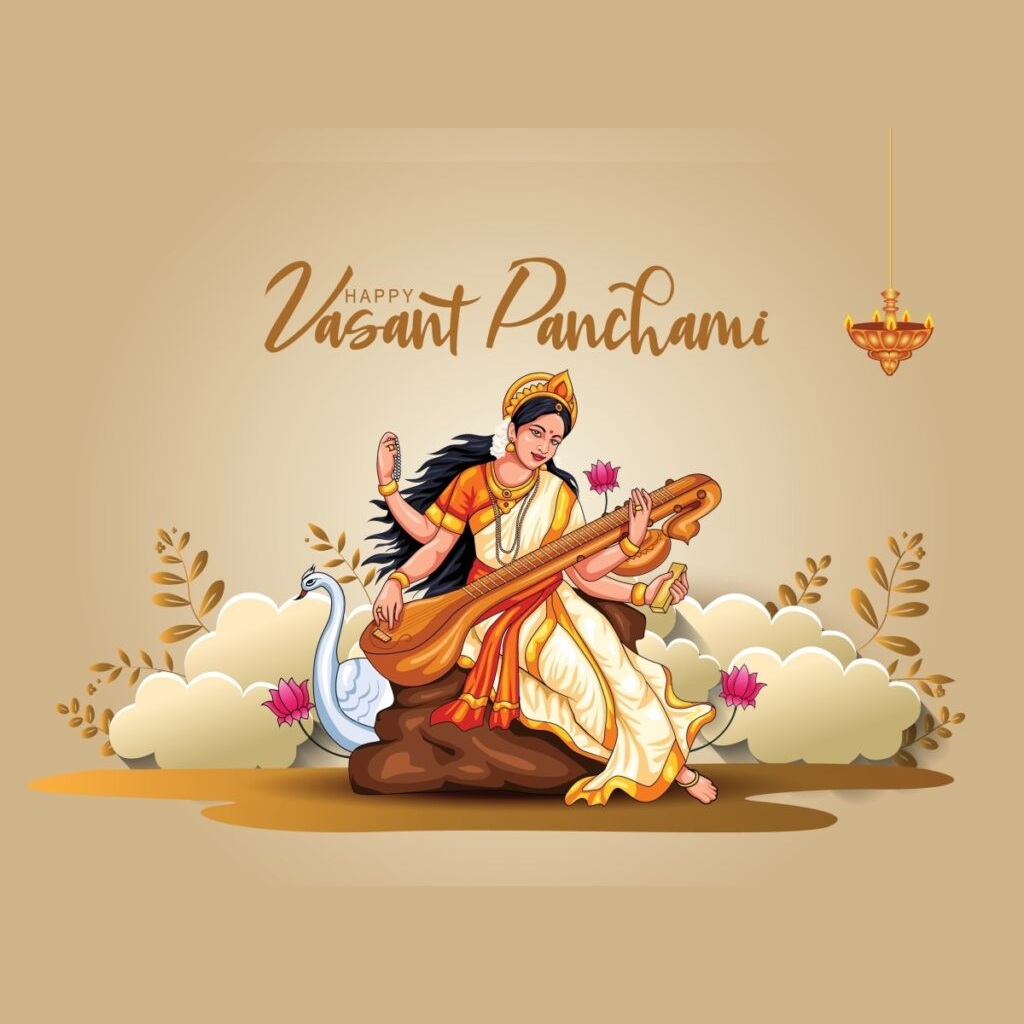
Chris
|April 13, 2024
I sincerly apppreciate the people and effort taken to make this available. I live in the Appalachain mountains and am just recently discovering Sadhanana Dharma I lack the vocabulary to accuratly convey how grateful I feel for what certainly qualifies as Grace. Truth seems to just keep coming to me. i wouldnt have known what to look for or where and non-Abrahamic places of worship are too few and very far between in the lovely mountains. May any merit derived from me reading this go towards aiding more opportunities for more to remember the light within themselves Jai Ram!
Sudhir bhokta
|March 28, 2024
Very nice 😍 congratulations to all friends and family members with